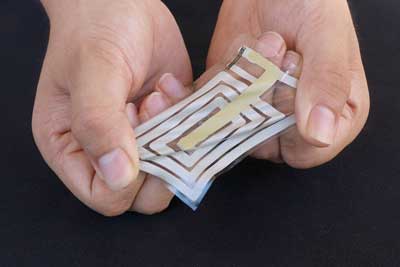 Engineers have developed experimental stickers that pick up physiological signals emanating from the skin, then wirelessly beam these health readings to a receiver clipped onto clothing. It's all part of a system called BodyNet.
Engineers have developed experimental stickers that pick up physiological signals emanating from the skin, then wirelessly beam these health readings to a receiver clipped onto clothing. It's all part of a system called BodyNet.
Friday, August 16, 2019
Wireless stick-on sensors pick up physiological signals emanating from the skin
 Engineers have developed experimental stickers that pick up physiological signals emanating from the skin, then wirelessly beam these health readings to a receiver clipped onto clothing. It's all part of a system called BodyNet.
Engineers have developed experimental stickers that pick up physiological signals emanating from the skin, then wirelessly beam these health readings to a receiver clipped onto clothing. It's all part of a system called BodyNet.
A heat shield just 10 atoms thick to protect electronic devices
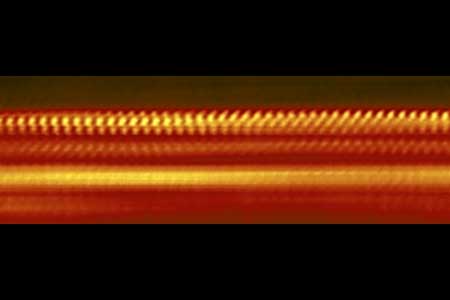 Atomically thin heat shields could be up to 50,000 times thinner than current insulating materials in cell phones and laptops.
Atomically thin heat shields could be up to 50,000 times thinner than current insulating materials in cell phones and laptops.
Wearable sensors detect what's in your sweat
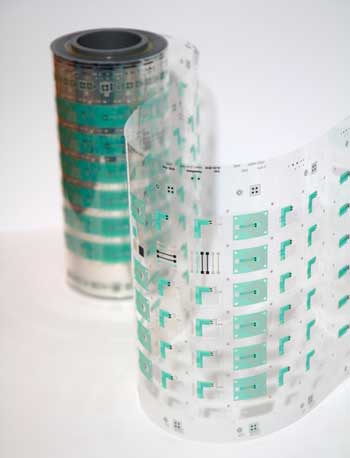 New easy-to-make sensors can provide real-time measurements of sweat rate and electrolytes and metabolites in perspiration.
New easy-to-make sensors can provide real-time measurements of sweat rate and electrolytes and metabolites in perspiration.
Nylon as a building block for transparent electronic devices?
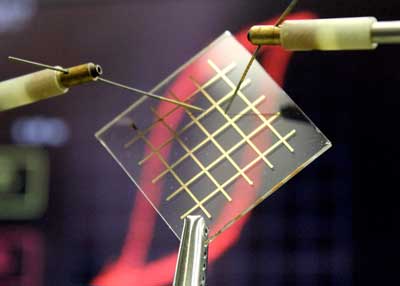 Scientists have solved a four decade long challenge of producing very thin nylon films that can be used for instance in electronic memory components. The thin nylon films are several 100 times thinner than human hair and could thus be attractive for applications in bendable electronic devices or for electronics in clothing.
Scientists have solved a four decade long challenge of producing very thin nylon films that can be used for instance in electronic memory components. The thin nylon films are several 100 times thinner than human hair and could thus be attractive for applications in bendable electronic devices or for electronics in clothing.
A novel cellular process to engulf nano-sized materials
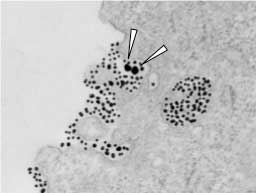 Researchers discovered a cellular process that allows nanomaterial entry into cells.
Researchers discovered a cellular process that allows nanomaterial entry into cells.
Risk assessment at nanoscale level: A closer look at the mimotope variation analysis
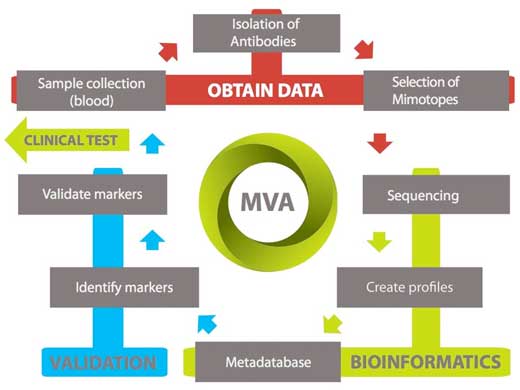 The PANBioRA is developing a modular system for a comprehensive risk assessment of biomaterials. The instrument will be able to compare different biomaterials and help doctors to choose the best suited material for a patient before implantation.
The PANBioRA is developing a modular system for a comprehensive risk assessment of biomaterials. The instrument will be able to compare different biomaterials and help doctors to choose the best suited material for a patient before implantation.
Fluorescent carbon dots could make cancer treatment safer and more effective
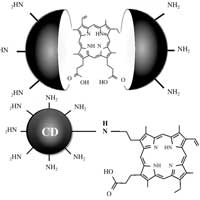 Researchers develop new technique with carbon nanoparticles to make photodynamic therapy safer, cheaper and more effective.
Researchers develop new technique with carbon nanoparticles to make photodynamic therapy safer, cheaper and more effective.
uSEE breakthrough unlocks the nanoscale world on standard biology lab equipment
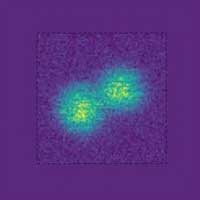 Standard optical microscopes can image cells and bacteria but not their nanoscale features which are blurred by a physical effect called diffraction. Now, researchers report a simple way to bypass diffraction limitations using standard optical imaging tools.
Standard optical microscopes can image cells and bacteria but not their nanoscale features which are blurred by a physical effect called diffraction. Now, researchers report a simple way to bypass diffraction limitations using standard optical imaging tools.
How synthetic cells are fighting infectious bacteria
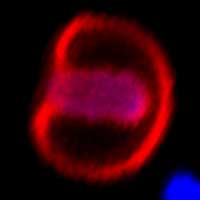 Study reveals key ingredients for the design of artificial cells to fight antibiotic-resistant bacteria.
Study reveals key ingredients for the design of artificial cells to fight antibiotic-resistant bacteria.
Optofluidic chip with nanopore 'smart gate' developed for single molecule analysis
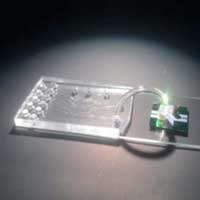 Programmable device enables on-demand delivery of individual biomolecules with feedback-controlled gating for high-throughput analysis.
Programmable device enables on-demand delivery of individual biomolecules with feedback-controlled gating for high-throughput analysis.
Subscribe to:
Comments (Atom)
